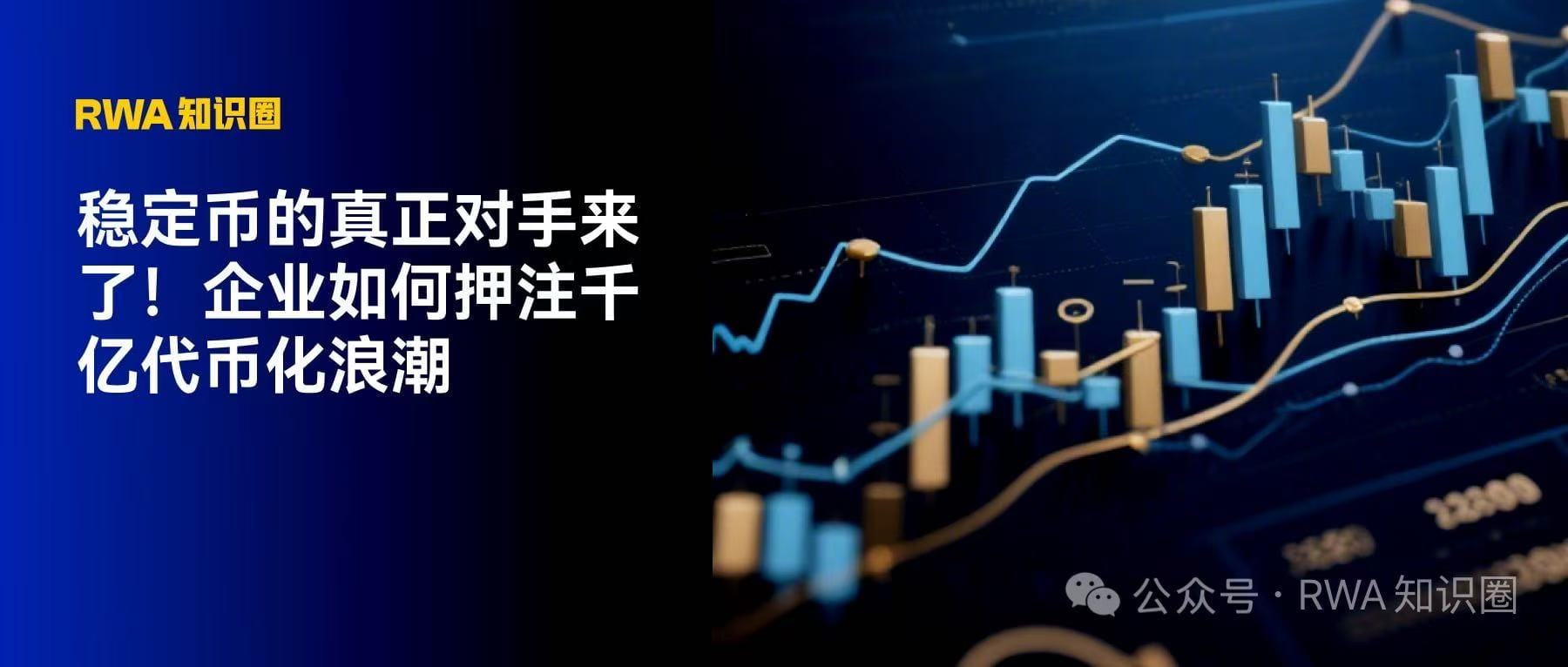
Written by | RWA Knowledge Circle
Compiled by | RWA Knowledge Circle
1. Regulatory Breakthroughs Give Rise to a New Era of Token Competition
With the passage of the (GENIUS Act) in the U.S. House of Representatives, crypto assets have for the first time gained a systematic regulatory framework, filling a regulatory void that lasted a decade between the SEC and CFTC. It is worth noting that the House (STABLE Act) will also complete legislation in August. Just as the industry rejoices at the clarification of regulations, traditional financial institutions like JPMorgan have quietly introduced alternative solutions to stablecoins—deposit tokens, directly challenging the market position of stablecoins. This evolution of the landscape will force enterprises to face a critical choice—between a bank-led compliant deposit token ecosystem and a crypto-native stablecoin system.
2. The Logic of Reconstructing the Underlying Value of Stablecoins
To understand why traditional financial giants have launched deposit tokens in response to the popularity of stablecoins, it is first necessary to clarify the core advantages of stablecoins in the enterprise market:
Revolution of Trust Mechanisms: Distributed Ledger Achieves Real-Time Verifiability of Transactions
Breakthrough in Efficiency Paradigm: Cross-Border Settlement Cycle Shortened to T+0
Enhancement of Financial Inclusion: Emerging Market Enterprises Gain Equal Payment Capacity
It is precisely these disruptive advantages that prompt traditional financial institutions to launch deposit tokens as a response. Stablecoins have efficiency advantages in cross-border scenarios (such as shortening the T+3 cycle), but deposit tokens, with the integration of the banking system, demonstrate stronger universality in everyday payments, payroll disbursement, and supply chain finance in the U.S. Especially for SMEs, deposit tokens eliminate the technical threshold of crypto wallets, allowing on-chain fund management to be directly connected to corporate ERP systems.
3. The Blockchain Survival Strategy of Traditional Banks
Blockchain technology reshapes the foundation of trust through distributed accounting mechanisms, forcing long-resistant institutions to face survival crises. JPMorgan has keenly grasped this trend and officially launched the JPMD deposit token based on the Base blockchain on June 18, 2025 (with technical support from Coinbase), practicing the competitive strategy of 'returning the favor.' This strategic layout began in 2023 with the special research of its blockchain department Kinexys, and the token essentially represents the digital expression of holders' claims to bank deposits. Based on this technological foundation, as a regulated commercial bank currency, the deposit token demonstrates unique advantages against stablecoins in domestic scenarios in the U.S.—by deeply integrating existing banking infrastructure, creating a moat in domestic payment clearing, corporate financial management, and regulatory compliance.
Hybrid Clearing Architecture: Settling on the Base Public Chain, but Reserves Held in JPMorgan's FDIC Insured Account
Programmable Cash Flow: Supports Conditional Payments (e.g., Bill of Lading Trigger Payments in Trade Financing)
Localized Efficiency: Achieving Domestic Payment T+0 Settlement Based on the Bank Clearing Network
Corporate Ecosystem Integration: KYB Certified Enterprises Can Directly Connect to ERP Systems for Millions in Transfers
However, its institutional defects are also evident:
Liquidity Fragmentation: Circulation Limited to the Morgan System, Creating 'On-Chain Islands'
Innovation Suppression: Need to Follow Banking Compliance Processes, Losing the Composability Advantage of DeFi
Missing Inclusiveness: Refusal of Service to Enterprises in Regions Not Meeting Anti-Money Laundering Standards
In the face of the dual complexity of stablecoins and deposit tokens, professional RWA accelerators are becoming key enablers for SMEs—through customized assessment models that analyze corporate asset structures, cash flow characteristics, and regulatory adaptability, providing full-cycle services from RWA issuance scheme design to compliance framework construction, significantly lowering the threshold for SMEs to participate in the digital asset economy.
4. Theoretical Reconstruction Path for RWA on Chain
When enterprises face the complexity of token selection, stablecoins and deposit tokens are essentially on-chain reflections of financial debt assets, collectively signaling the full outbreak of the tokenization wave of real assets. Real assets such as real estate and commodities are converted into tradable shares through the theory of property division, allowing non-standard assets to gain securities-level liquidity. Rights management dependent on state achieved by smart contracts can automatically execute complex rights distributions such as dividends and leases.
In the face of the resulting technological and compliance maze, systematic RWA courses have emerged as a key for corporate decision-makers and practitioners to break through. The course deeply analyzes the core four-dimensional capability system of RWA: Compliance Penetration (deconstructing multi-country regulatory requirements and reporting pathways), Technical Architecture (oracle integration, cross-chain gateway deployment, and smart contract security), Liquidity Strategy (market maker connections and secondary market cultivation), and Valuation Modeling (development and application of on-chain asset pricing models). Through real case disassembly and sandbox simulations, the course empowers students to master practical skills for the entire process from asset selection, structural design, compliance issuance to liquidity management, helping enterprises accurately anchor value and efficiently unleash capital potential in the multi-trillion-dollar RWA blue ocean.



